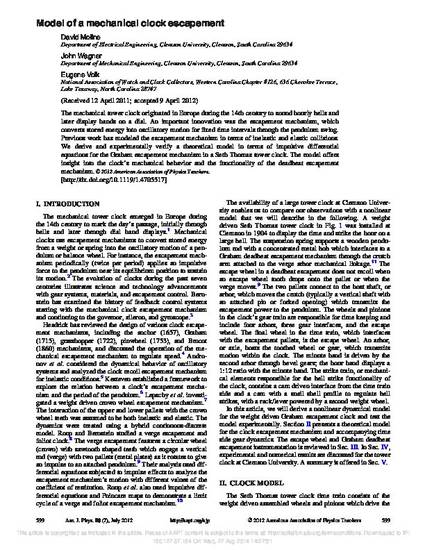
Article
Model of a Mechanical Clock Escapement
American Journal of Physics
Document Type
Article
Publication Date
7-1-2012
Publisher
American Association of Physics Teachers
Disciplines
Abstract
The mechanical tower clock originated in Europe during the 14th century to sound hourly bells and later display hands on a dial. An important innovation was the escapement mechanism, which converts stored energy into oscillatory motion for fixed time intervals through the pendulum swing. Previous work has modeled the escapement mechanism in terms of inelastic and elastic collisions. We derive and experimentally verify a theoretical model in terms of impulsive differential equations for the Graham escapement mechanism in a Seth Thomas tower clock. The model offers insight into the clock’s mechanical behavior and the functionality of the deadbeat escapement mechanism.
Citation Information
Please use publisher's recommended citation.

Copyright is held by the American Association of Physics Teachers. Published version can be found here: http://scitation.aip.org/content/aapt/journal/ajp